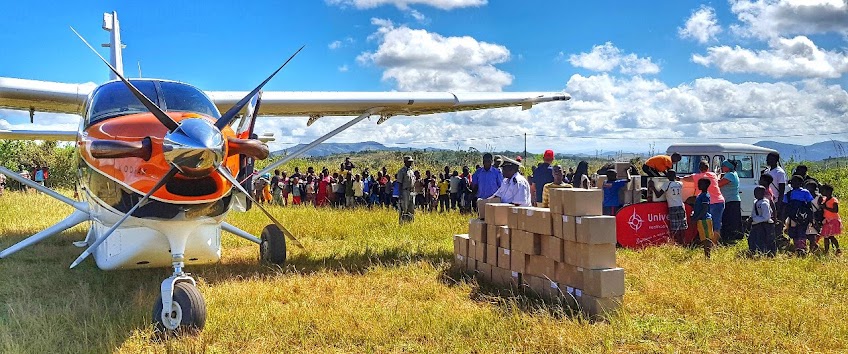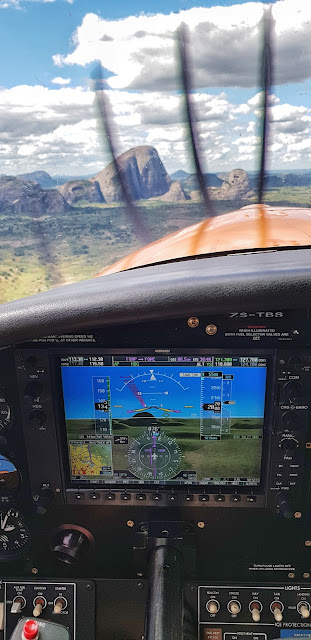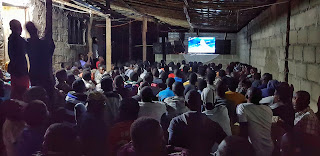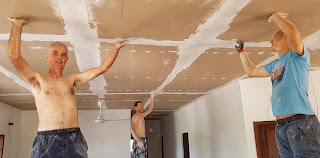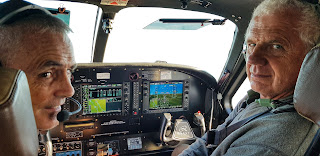I had a very different, but worthwhile week recently.
It started by taking an education team up to the Zambezi Delta, to help train teachers cope with a curriculum that had missed a whole year of school due to Covid. After just one night with the team, we got a call to say that Ambassador Aviation, whom we partner with, needed some help with their response to the refugee crisis in the very north of Mozambique.
Ambassador had been assisting with the evacuation of people fleeing the town of Palma following deadly fighting between government forces and insurgents linked with ISIL (ISIS).
The insurgents began a major offensive in late March burning the town, slaughtering hundreds of people and causing thousands of others to flee either into the bush or try to make it to the beach, in the hope that they could board a fishing boat to Pemba, a week's sailing away. The extremist attacks started in 2017 and international aid groups estimate that over 700,000 people had been displaced from their homes since the attacks began.
It's hard to explain what this involved for us, even using a map, but basically I flew more in a week than I had done in any other week in over 23 years of flying.
This amounted to:
37 hrs flying, 4700nm = 5400 miles = 8700km, or the equivalent of London to LA - which is quite a long way in a little plane!
The flights were done in collaboration with Ambassador Aviation based in Nampula and who raised funds to cover the costs. We worked in co-operation with the Mozambican military and a humanitarian organisation named VAMOZ (Volunteers Anonymous Mozambique), who vetted and prioritised people for evacuation. They also organised food aid which we took on the empty legs up to Palma.
On our first trip up we took 450kg of medical supplies.

I was fortunate enough to have a young Mozambican guy named Manny join me for the week. He was brilliant and did a lot of the running around on the ground liaising with everybody from the highest government administrators in the province, the military top brass and high-ranking police officials to the fuel bloke. He was perhaps most useful arranging the refugees at Palma, where spending the least amount of time on the ground was of the utmost importance.
 |
Manny and I on our first flight with the meds and a guy who made sure they went to the right people
|
Initially there were often more people arrive at the plane than we could fit on. As Manny was explaining who could and couldn't get on, I saw the lady on the left push her child into the group of people who had been told they could go. That showed the desperation that even if she couldn't get out, her child might have a chance, and hopefully they might be reconnected in a few days - or weeks' time.

Many people had to be carried to the plane...
..or bought on a stretcher.

This guy was just left by the back door in the hope that we could find room for him.

On the flight back it was hard to work out people's emotions. Somewhere between being glad to be heading to somewhere safe, but perhaps also reflecting on what they had been through and thinking of family who were still there or still missing.



I don't think this guy could see or even knew what an aircraft was. We sat him down but when his seat started to wobble around as other people got on board, he got really worried. I'd have loved to see his face as we took off...
He looked a lot more composed when, an hour later, we delivered him to Pemba and safety.

Most times we landed in Pemba there was an ambulance waiting - or sometimes even two, to help the ill and/or injured get to the help they needed.


..while the other disembarked themselves.

Each time we went back up with supplies like maize or bread for those still there.


The one morning we heard there had been some more attacks in Palma the previous night, and on our first flight of the day we did see lines of people walking away from town along the beach, carrying what they could. For those that can get into a boat, it can take a week with no food to get to Pemba. For the few we can take each time, it takes an hour!
Wed had mixed weather but every now and then glimpsed a sight to prove that not everything was ugly up there.

On each leg we flew past seemingly idyllic islands oblivious to the turmoil happening only a few miles to the north.

So, at the end of a manic week we had flown 1.5 tonnes of supplies up, and over 100 people down to safety. We even cancelled the last two flights as intelligence suggested the insurgents might have upped their anti-aircraft capabilities.
A shout out must also go to Rui who was involved with VAMOZ. We spoke absolutely nothing of each other's respective languages, but got on like a house on fire. He ran around for us in Pemba providing lifts and making sure that anything we needed was there on time, including breakfast and lunch!
 |
Myself, Rui and Manny
|
All that was left to do on the last day was to return Manny to his family in Nampula, and then fly back down to collect my passengers on the Zambezi before the relatively short three hour flight back to South Africa.
Thank you
Paul and Cathy



